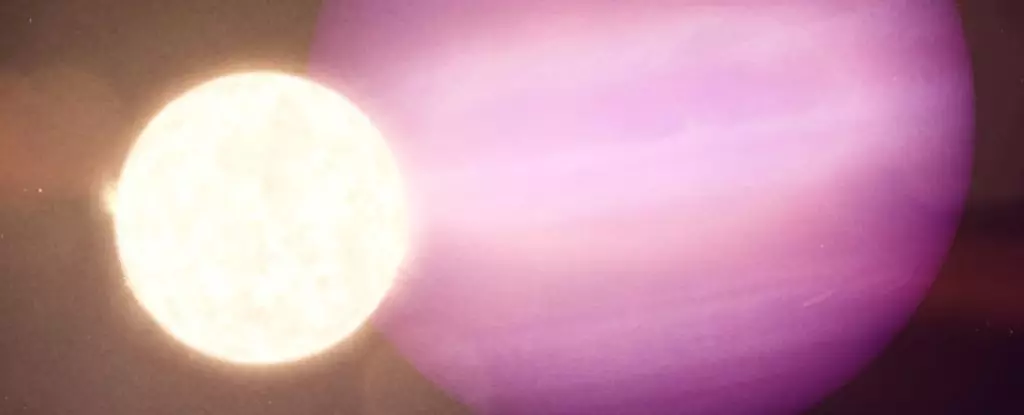The quest to uncover the secrets of planets beyond our solar system has taken a significant leap with the discovery of WD 1856+534 b. This intriguing exoplanet, located an astonishing 81 light-years away, has sparked the interest of astronomers worldwide due to its unique attributes and its role in advancing our understanding of planetary systems around white dwarf stars. Though initially detected in 2020, recent findings using the James Webb Space Telescope (JWST) have brought new dimensions to this discovery, characterizing it as the coldest exoplanet yet observed. These revelations not only enhance our knowledge of gas giants but also reshape our understanding of planetary survival in the harsh aftermath of a star’s lifecycle.
The Role of JWST in Modern Astronomy
The JWST represents a monumental leap in observational technology, outperforming its predecessors by providing unprecedented detail of celestial objects. Employing its sophisticated Mid-Infrared Instrument (MIRI), astronomers have begun to peer into the atmospheres of distant planets, allowing insights into their compositions. For WD 1856+534 b, researchers led by Mary Anne Limbach have applied infrared observations to confirm its characteristics, revealing crucial information about its mass and temperature. This sophisticated observational power is pivotal, as it opens the door to discerning biosignatures—chemical indicators of life—that may exist on these distant worlds.
Through JWST’s Direct Imaging Method, astronomers can obtain spectra from light reflected off an exoplanet. While the challenge lies in avoiding the blinding light of host stars, WD stars offer a unique vantage point. Their low luminosity allows for a clearer sight of orbiting planets, which could illuminate the mysteries of planetary habitability in the aftermath of stellar evolution. As various institutions, including the University of Michigan and MIT, join forces in this pursuit, the collaborative effort highlights the significance of shared knowledge in the complex field of exoplanet studies.
The Intriguing Characteristics of WD 1856+534 b
WD 1856+534 b stands out among its peers, not merely due to its size—approximately six times the mass of Jupiter—but also because of its peculiar orbit around a white dwarf star. This “super-Jupiter” showcases how planetary systems can evolve and adapt even after their host stars transition into white dwarfs. The JWST’s recent findings indicate that this gas giant possesses an average temperature of 186 K, making it the coldest exoplanet to date. This revelation is a game changer; it challenges previous assumptions about the thermal characteristics of exoplanets, which had not extended adequately into cooler atmospheres.
Furthermore, the corrections to its mass—estimated to be no more than six Jupiter masses instead of earlier predictions that placed it at a daunting 13.8 Jupiter masses—mean that our understanding of these distant worlds continues to refine. The methods employed by Limbach and her team have not only confirmed the existence of the planet but also reestablished scientific benchmarks for confirming exoplanetary masses and temperatures, bolstering the confidence of the astronomical community in these techniques.
Cosmic Insights from White Dwarfs
Exploring exoplanets like WD 1856+534 b provides critical insights into the fate of our own solar system. White dwarfs—remnants of stars similar to our Sun—represent a natural laboratory for understanding planetary evolution. The examination of WD planetary systems can provide crucial clues about how planets endure and adapt amid the dramatic changes that occur during the death of a star. The observed migrations of planets into closer orbits around white dwarfs hold vital information about stability and potential habitability in extreme conditions.
Investigations into whether habitable conditions persist around these stellar remnants could redefine our understanding of where life might exist in the cosmos. This line of inquiry resonates with both astronomers and astrobiologists, as it shifts the paradigm toward discovering life beyond Earth in these unexpected circumstances. Each observation chips away at the tautological view of life, presenting the possibility that life might find a way to thrive even in environments previously deemed inhospitable.
The Future of Exoplanet Research
With the JWST design set to continue its explorative mission, future observations of WD 1856+534 b are on the horizon. Planned studies scheduled for 2025 promise to reveal more about this enigmatic gas giant and potentially uncover other celestial bodies in its vicinity, thus deepening our understanding of the dynamics at play in such systems. The anticipated data from Webb’s Near-Infrared Spectronometer (NIRSpec) will soon bring forth initial atmospheric characterizations, further illuminating the reality of this unique world.
In light of these groundbreaking findings, the astronomical community stands on the precipice of further exploration, poised to unravel the complexity of planetary life across changing stellar landscapes. The pursuit of knowledge through innovative technology continues, suggesting the universe still holds countless mysteries waiting to be uncovered. As we unlock each celestial secret, the narrative of life beyond Earth draws ever closer, igniting imaginations and expanding the horizons of what we know about our place in the cosmos.

